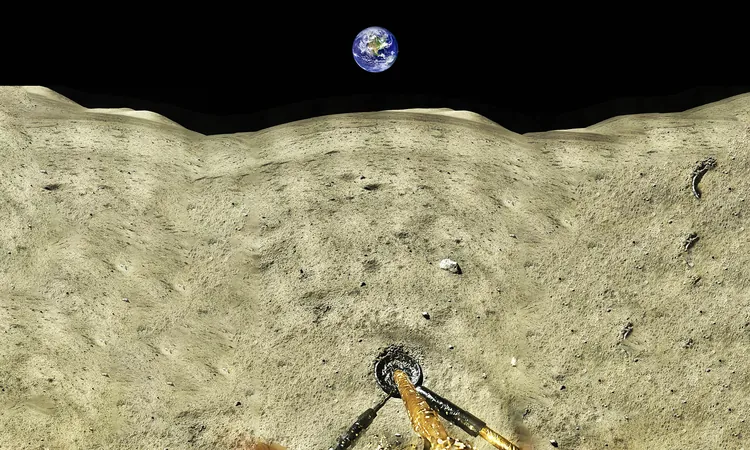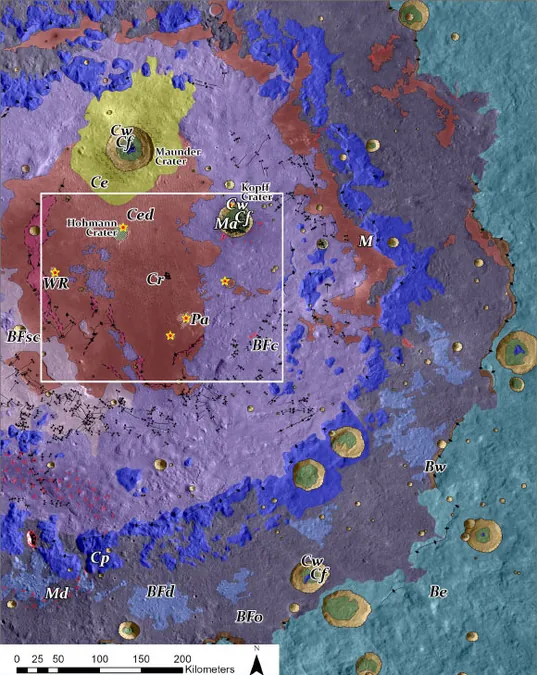
Unraveling the Mysteries of the Moon: Volcanic Activity Spanning Over a Billion Years
2024-11-19
Author: Li
Unraveling the Mysteries of the Moon: Volcanic Activity Spanning Over a Billion Years
Have you ever gazed at the Moon and wondered about its two contrasting sides? While we marvel at the near side that presents its familiar features, the far side remains obscured, a mysterious entity hidden from our view. Recent findings by a team led by Professor XU Yigang from the Guangzhou Institute of Geochemistry at the Chinese Academy of Sciences have illuminated this enigma, revealing that the far side of the Moon experienced volcanic eruptions for over a billion years.
These groundbreaking insights stem from lunar soil samples brought back to Earth by China's Chang'e-6 mission. The samples, collected from the South Pole-Aitken (SPA) Basin on the far side of the Moon, offer a treasure trove of information regarding the lunar body's unique geological dichotomy.
The Chang'e-6 Mission: A Bold Lunarexploration Endeavor
Launched on May 3, 2024, the Chang'e-6 mission was a significant milestone for the Chinese space program, aiming to obtain Moon rocks from the far side—an unprecedented feat in lunar exploration. Equipped with a lander, a drill, and a small rover, the mission not only captured surface samples but reached depths of up to two meters into the lunar soil.
Upon collecting approximately 4.2 pounds (1.9 kg) of lunar material, the samples were successfully returned to Earth on June 25, 2024. This achievement is a monumental step forward for China's space ambitions, fueling future lunar explorations.
Understanding Lunar Differences: The Near vs. Far Side
The stark geological contrast between the Moon’s near side and far side is marked by their physical features and mineral compositions. The near side is characterized by vast maria—dark plains formed by ancient volcanic activity—while the far side shows a marked lack of these features, with only about 2% covered by mare basalts compared to around 30% on the near side.
Through the analysis of the Chang'e-6 samples, researchers uncovered two distinct types of mare basalts: low-Ti and very low-Ti (VLT). Impressively, high-precision Pb-Pb dating techniques revealed that the low-Ti basalts date back approximately 2.83 billion years, indicating persistent volcanic activity on the far side of the Moon.
Mapping Volcanic History: Insights Revealed
The research team, under Professor LI Qiuli's leadership, conducted extensive radioisotope dating of 108 basalt fragments, finding that 107 of them consistently formed around 2.8 billion years ago. Remarkably, one fragment was dated to 4.2 billion years, marking it as the oldest lunar basalt with a precisely determined age. This discovery suggests that volcanic activity on the far side persisted for at least 1.4 billion years.
This new understanding affects our knowledge of the Moon's geological history and implications for theories regarding early solar system migration, highlighting the significance of continuous impact flux post-2.83 billion years.
Future of Lunar Exploration: What Lies Ahead?
As we stand on the brink of a new age in lunar exploration, missions like Chang'e-6 promise to unveil more secrets of our celestial companion. Each discovery allows us to deepen our understanding of the Moon and—by extension—our cosmic neighborhood.
The researchers express gratitude for the ongoing support from various institutions, paving the way for ambitious exploratory missions. The findings, published in reputable journals, will certainly foster more interest and research into lunar anomalies and cosmos.
The Moon, with its intriguing history and hidden treasures, continues to beckon explorers and scientists alike, promising revelations that may forever change our perceptions of our closest celestial neighbor.

 Brasil (PT)
Brasil (PT)
 Canada (EN)
Canada (EN)
 Chile (ES)
Chile (ES)
 España (ES)
España (ES)
 France (FR)
France (FR)
 Hong Kong (EN)
Hong Kong (EN)
 Italia (IT)
Italia (IT)
 日本 (JA)
日本 (JA)
 Magyarország (HU)
Magyarország (HU)
 Norge (NO)
Norge (NO)
 Polska (PL)
Polska (PL)
 Schweiz (DE)
Schweiz (DE)
 Singapore (EN)
Singapore (EN)
 Sverige (SV)
Sverige (SV)
 Suomi (FI)
Suomi (FI)
 Türkiye (TR)
Türkiye (TR)